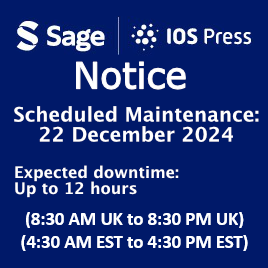Article type: Research Article
Authors: Birnbaum, Simonea; b; c; * | Bachasson, Damiena | Sharshar, Tarekd; e; f | Porcher, Raphaëlg; h | Hogrel, Jean-Yvesa | Portero, Pierreb
Affiliations:
[a] Neuromuscular Physiology and Evaluation Laboratory, Neuromuscular Investigation Center, Institute of Myology, Paris, France
|
[b] Bioingénierie, Tissus et Neuroplasticité, EA Université Paris-Est Créteil, Créteil, France
|
[c] Unité de Recherche Clinique Paris Île-de-France Ouest (URC PIFO), Raymond Poincaré Hospital, AP-HP, Garches, France
|
[d] Intensive Care Unit, Raymond Poincaré Hospital, AP-HP, Garches, France
|
[e]
Paris-Descartes University, France
|
[f] Experimental Neuropathology, Institut Pasteur, Paris, France
|
[g] Université de Paris, CRESS, INSERM, INRA, Paris, France
|
[h]
Centre d’Epidémiologie Clinique, AP-HP, Hôpital Hôtel-Dieu, Paris, France
Correspondence:
[*]
Correspondence to: Simone Birnbaum, Neuromuscular Physiology Laboratory, Neuromuscular Investigation Center, Institute of Myology, Groupe Hospitalier Pitié-Salpêtrière, Bd de l’Hôpital, 75651 Paris Cedex 13, France. Tel.: +33 142165879; E-mail: [email protected].
Abstract: Background:Muscle weakness and fatigability, the prominent symptoms of autoimmune myasthenia gravis (MG), negatively impact daily function and quality of life (QoL). It is currently unclear as to what extent symptoms limit activity and whether physical activity (PA) behaviours are associated with reduced QoL. Objectives:This study aimed to describe habitual PA patterns and explore relationships between PA metrics, clinical MG characteristics, and health-related QoL (HRQoL). Methods:PA data from a tri-axial trunk accelerometer worn for seven days, was collected from females with generalized, stable MG and compared to control subjects. MG-specific evaluations, the six-minute walk test and knee extension strength were assessed in individuals with MG (IwMG). Mann-Whitney tests were used to study between-group differences. Spearman rank correlation coefficient was performed to explore relationships between variables. Results:Thirty-three IwMG (mean (SD) age 45 (11) years) and 66 control subjects were included. IwMG perform less vigorous-intensity PA than control subjects (p = 0.001), spend more time sedentary (p = 0.02) and engage in less and shorter durations of moderate-vigorous-intensity PA (MVPA). For IwMG, habitual PA correlated positively with 6 min walking distance (rho = 0.387, p = 0.029) and negatively with body mass index (rho = –0.407, p = 0.019). We did not find any association between PA or sedentary behaviour and; HRQoL, symptom severity nor lower limb strength. Conclusions:Individuals with stable MG perform less PA, at lower intensities, and are more inactive than control individuals. Further research is warranted to understand factors influencing PA patterns in MG and whether interventions could be successful in increasing PA quantity and intensity in IwMG.
Keywords: Autoimmune myasthenia gravis, physical activity, sedentary behaviour, quality of life, accelerometry
DOI: 10.3233/JND-210637
Journal: Journal of Neuromuscular Diseases, vol. 8, no. 4, pp. 689-697, 2021




